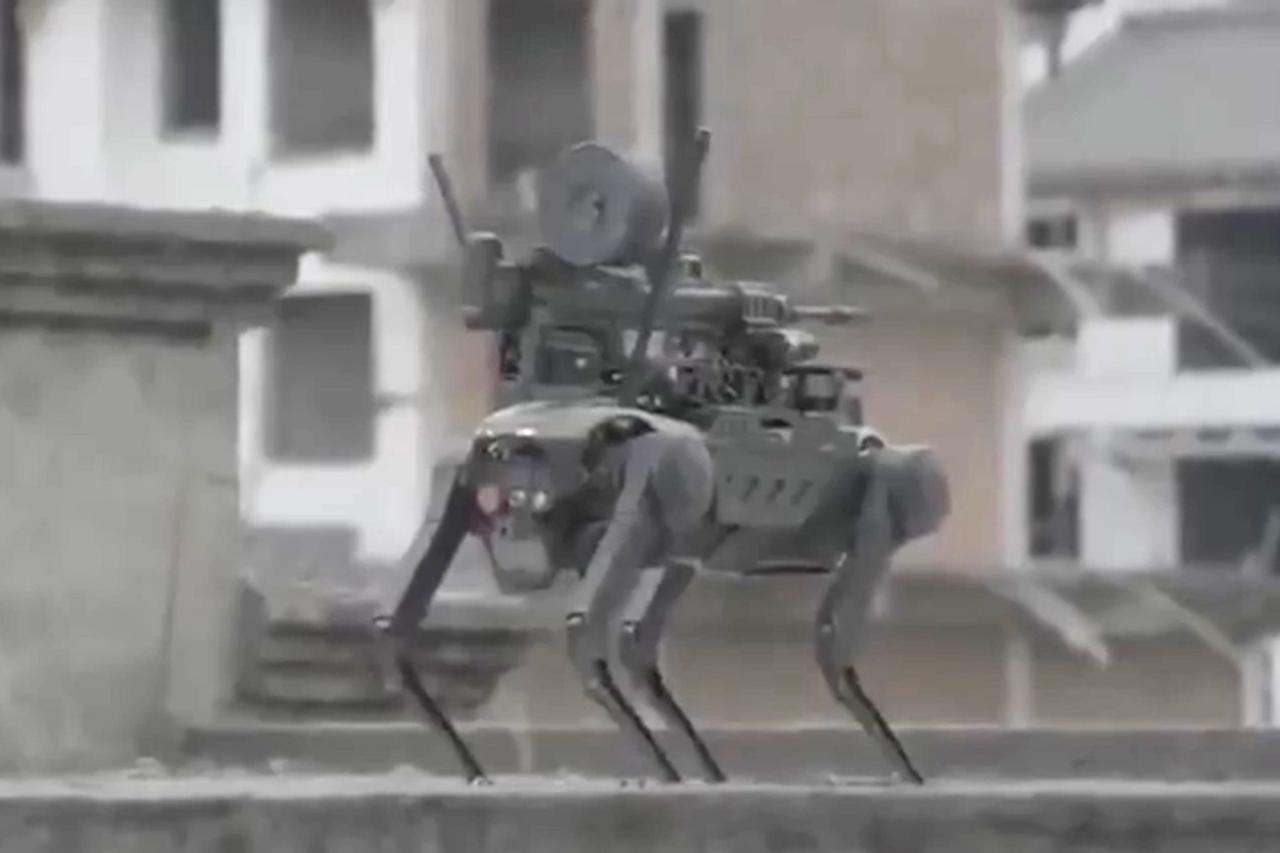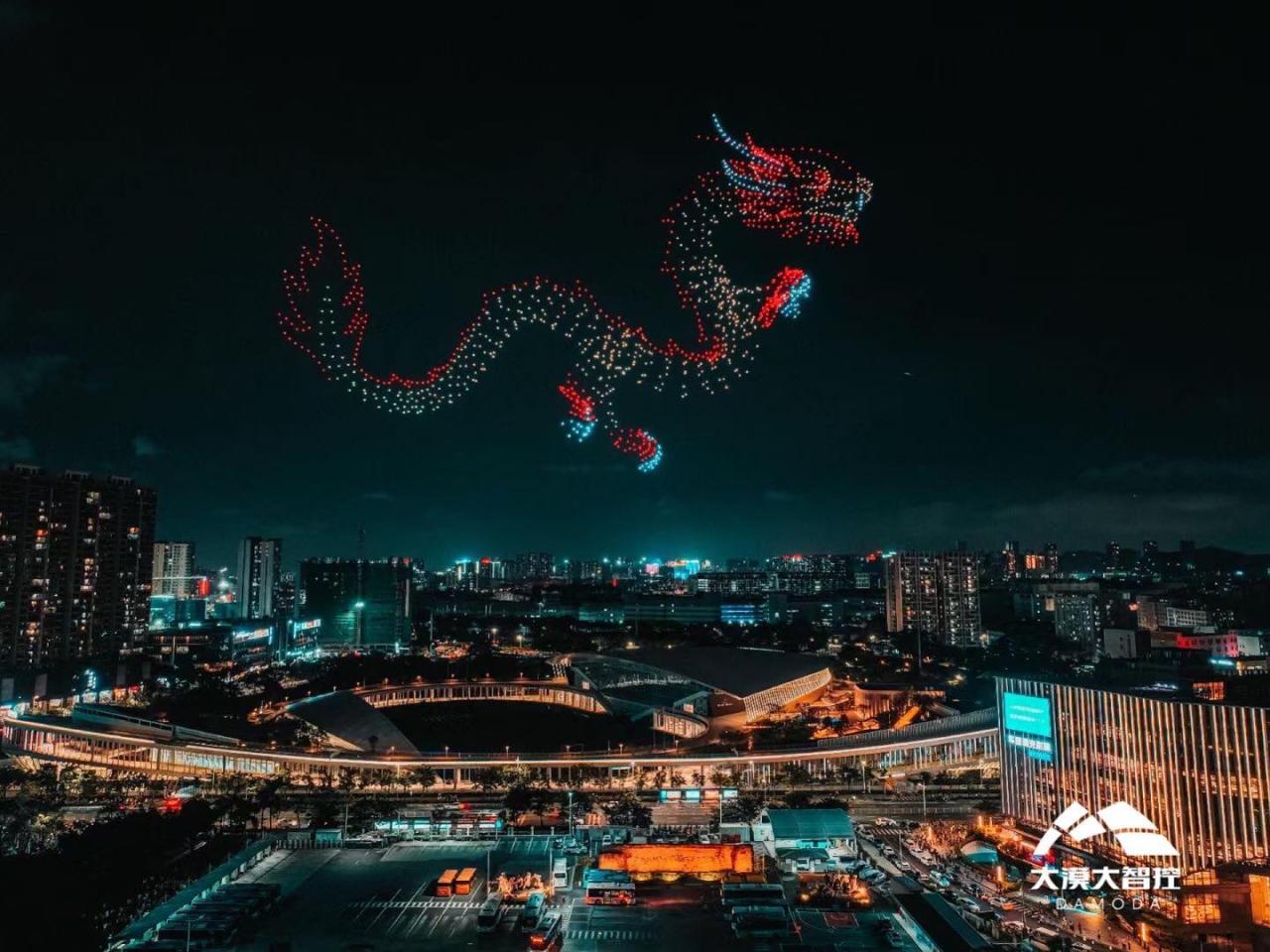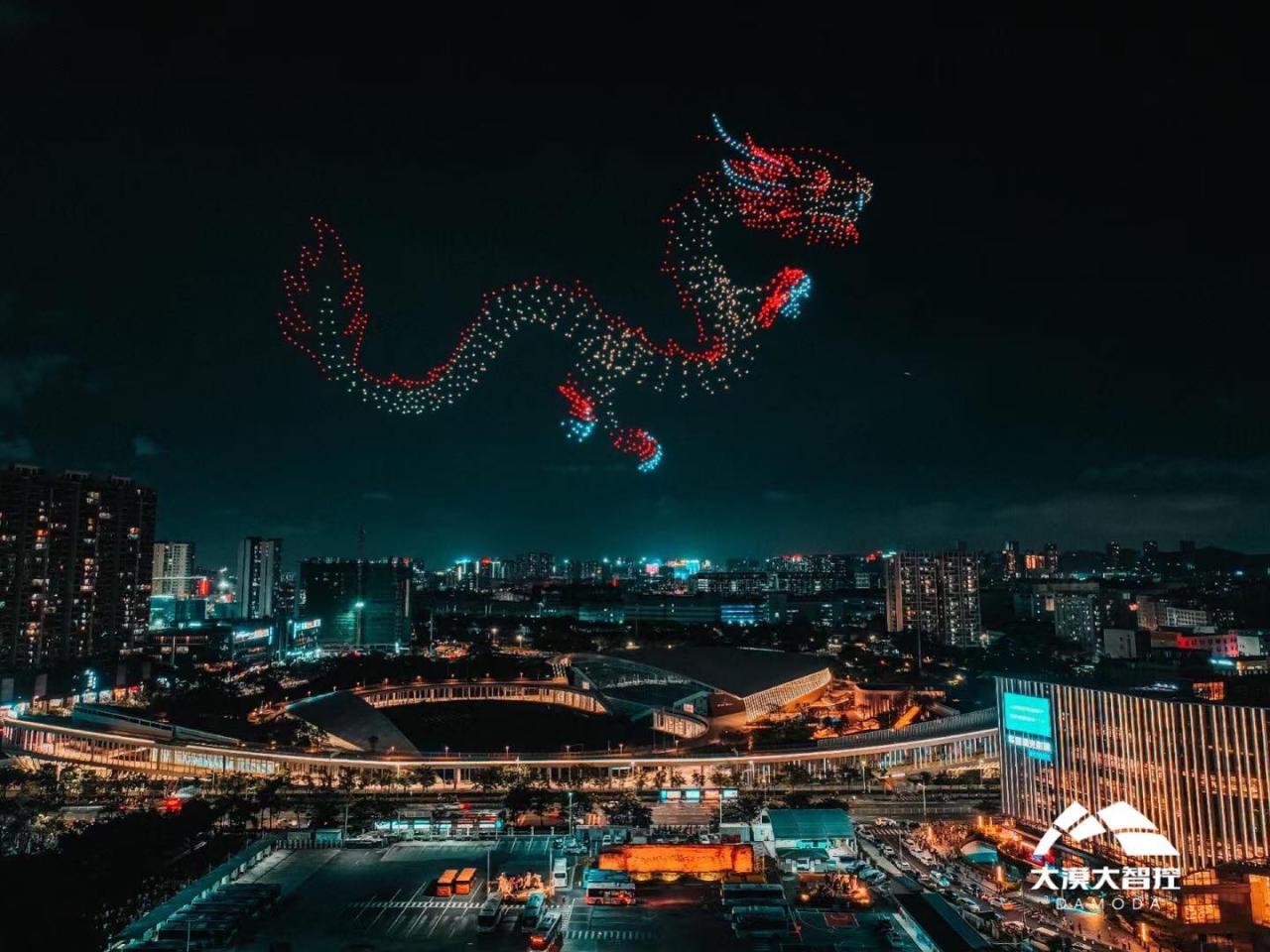China Drone Show 2073: Imagine a night sky transformed into a breathtaking canvas of light and movement, orchestrated by thousands of autonomous drones. This isn’t science fiction; it’s a glimpse into the potential of advanced drone technology in China by 2073. We’ll explore the technological leaps, societal impacts, and global competition shaping this futuristic spectacle.
This exploration delves into the potential advancements in Chinese drone technology, including increased flight times, heavier payloads, and sophisticated AI integration. We’ll compare this hypothetical future with current global leaders in drone technology and consider the societal implications of massive drone light shows, including economic benefits, privacy concerns, and environmental impact. Finally, we’ll examine the role of AI in choreographing these shows and the potential for international competition in this exciting new field.
Technological Advancements in Chinese Drone Technology by 2073

By 2073, Chinese drone technology is projected to achieve significant leaps forward, surpassing current global standards in various aspects. This advancement will be driven by substantial investments in research and development, coupled with a robust domestic manufacturing base and a focus on integrating cutting-edge AI capabilities.
Projected Advancements in Chinese Drone Technology
Significant improvements are anticipated in flight time, payload capacity, and AI integration. Flight times could extend to over 24 hours for certain models, facilitated by advancements in battery technology and more efficient propulsion systems. Payload capacity will likely increase dramatically, allowing for the transportation of heavier equipment and larger quantities of goods. AI integration will be deeply embedded, enabling autonomous navigation, obstacle avoidance, and sophisticated mission execution capabilities.
Comparison with Leading Technologies
Compared to current leading technologies from nations like the United States and Israel, Chinese drones in 2073 will likely exhibit superior capabilities in terms of endurance and payload capacity. While other nations may excel in specific niche areas, such as specialized sensor technology, China’s focus on comprehensive system integration and mass production could give it a decisive advantage in terms of overall performance and affordability.
Hypothetical Scenario: The “Dragonfly” Drone
Imagine the “Dragonfly,” a cutting-edge Chinese drone deployed for search and rescue operations in a remote mountainous region. Equipped with advanced sensors, including high-resolution cameras, thermal imaging, and ground-penetrating radar, the Dragonfly autonomously navigates challenging terrain, locates survivors, and transmits real-time data to rescue teams. Its extended flight time allows for prolonged search operations, while its robust payload capacity enables the delivery of essential supplies to stranded individuals.
Comparison of Hypothetical Chinese Drones (2073)
| Drone Model | Speed (km/h) | Range (km) | Payload (kg) | AI Features |
|---|---|---|---|---|
| Dragonfly | 150 | 500 | 200 | Autonomous navigation, obstacle avoidance, thermal imaging, facial recognition |
| Phoenix | 200 | 1000 | 50 | Advanced mapping, swarm coordination, predictive maintenance |
| Jade Dragon | 80 | 2000 | 300 | Autonomous delivery, weather prediction, communication relay |
Societal Impact of Large-Scale Drone Shows in China (2073)
By 2073, massive drone light shows will be a common feature of Chinese urban landscapes, profoundly impacting tourism, entertainment, and cultural expression. These spectacles will attract tourists from around the globe, boosting the economy and showcasing China’s technological prowess.
Economic Benefits and Challenges
The widespread adoption of drone shows will create new economic opportunities, generating jobs in design, engineering, operations, and tourism. However, challenges include managing the infrastructure required to support these events, ensuring safety, and mitigating environmental concerns. Competition among show organizers will also influence pricing and profitability.
Imagine a China drone show in 2073 – the scale would be mind-blowing! Think of the sheer number of drones, the intricate formations… it’s almost unbelievable. To get a sense of the kind of intense, large-scale spectacle we might see, consider the social commentary and global impact of shows like the one explored in squid game histoire vraie , only instead of desperate games, it’s a breathtaking display of technological prowess.
The China drone show of 2073 will undoubtedly be a sight to behold, pushing the boundaries of what’s possible.
Privacy, Security, and Environmental Concerns
Concerns regarding privacy violations from the potential for surveillance via drones, security risks associated with unauthorized drone operation, and the environmental impact of battery disposal and energy consumption will necessitate the implementation of stringent regulations and safety protocols.
Regulations and Safety Measures in Shanghai

In a densely populated city like Shanghai, regulations will likely include designated airspace for drone shows, strict flight path limitations, emergency shutdown protocols, and real-time monitoring systems to prevent accidents and unauthorized activity. Noise level restrictions and environmental impact assessments will also be integral components of the regulatory framework.
The Role of AI in Choreographing and Controlling Drone Shows in 2073

Advanced AI algorithms will be essential for choreographing the complex and dynamic movements of thousands of drones in a synchronized light show. These algorithms will optimize flight paths, lighting patterns, and overall show design, ensuring seamless transitions and captivating visual effects.
Imagine the China Drone Show 2073: thousands of drones painting breathtaking aerial displays. But what about underwater? That’s where innovation comes in, like the impressive capabilities of the magura v5 sea drone , showcasing underwater drone technology. Perhaps we’ll see similar synchronized underwater drone shows alongside the aerial displays at the China Drone Show 2073!
AI-Driven Features Enhancing Visual Spectacle
AI will enable features such as real-time audience interaction, adaptive choreography based on weather conditions, and the creation of intricate 3D formations that evolve dynamically throughout the show. AI could also personalize the experience, allowing viewers to interact with the show through mobile apps, influencing aspects of the display.
AI Optimization of Energy Consumption
AI algorithms will play a critical role in optimizing energy consumption by predicting and adjusting drone flight paths to minimize energy expenditure, maximizing the duration of the shows and reducing the environmental impact.
Imagine the China Drone Show 2073: thousands of drones creating breathtaking aerial displays. To get a sense of the intricate coordination needed, check out the strategic planning involved in vip 3 squid game , a fascinating example of large-scale group dynamics. This kind of precise control is crucial for the massive, mesmerizing shows we can expect from the China Drone Show 2073.
AI-Driven Process of Designing and Executing a Drone Light Show
The process will involve several stages:
- Concept Development: Defining the show’s theme, storyline, and target audience.
- 3D Modeling and Simulation: Creating a virtual representation of the show, allowing for adjustments and refinements.
- AI Choreography: Utilizing AI algorithms to generate optimized flight paths and lighting sequences.
- Drone Deployment and Testing: Deploying drones and conducting rigorous testing to ensure seamless synchronization and performance.
- Real-time Monitoring and Control: Utilizing AI to monitor the show’s progress and make adjustments as needed during the performance.
- Post-Show Analysis: Evaluating the show’s success based on audience feedback and operational data to inform future productions.
Global Competition and the Future of Chinese Drone Shows

By 2073, Chinese drone shows will likely surpass those in other countries in terms of scale, technological sophistication, and creative storytelling. However, maintaining a competitive edge will require ongoing innovation and collaboration with international partners.
Challenges and Opportunities for China
China will face challenges from emerging competitors, including the need to address environmental concerns and maintain technological leadership. Opportunities include expanding international collaborations, developing new forms of drone show entertainment, and integrating drone shows with other forms of entertainment.
Comparison with Other Leading Nations
A comparison would highlight China’s potential for large-scale, highly synchronized shows, while other nations might excel in innovative storytelling or unique drone designs. The integration of AR/VR technology will likely be a key area of differentiation.
Hypothetical International Drone Show Competition
An international competition in 2073 could feature teams from China, the United States, Japan, and the European Union. Judging criteria could include technical innovation, artistic merit, audience engagement, and environmental sustainability. The outcome would likely be highly competitive, reflecting the global race for technological advancement in this field.
Visual Representation of a 2073 Chinese Drone Show
Imagine a breathtaking spectacle over the Huangpu River in Shanghai. Thousands of drones, each equipped with advanced LED lighting, transform the night sky into a canvas of vibrant colors and dynamic formations. The drones might depict a flowing dragon, its scales shimmering with a thousand different hues, weaving through the cityscape.
Drone Formations and Lighting Techniques, China drone show 2073
The show might begin with a mesmerizing ballet of swirling lights, transitioning into intricate patterns that evoke traditional Chinese motifs. A dramatic sequence could feature the drones forming a colossal phoenix, its wings spanning the entire river, its fiery plumage rendered in shades of orange, red, and gold. The use of subtle color gradients and dynamic movements would create a sense of depth and immersion, drawing the audience into a captivating visual narrative.
Closing Notes
By 2073, China’s drone shows could redefine entertainment and cultural expression on a global scale. The integration of AI, the sheer scale of the displays, and the innovative choreography promise a truly awe-inspiring experience. However, careful consideration of safety, environmental impact, and ethical concerns will be crucial to ensure these spectacular events benefit society as a whole. The future of drone shows is bright, and China is poised to play a leading role.
Top FAQs: China Drone Show 2073
What types of formations could these drones create?
Imagine intricate 3D shapes, moving portraits, flowing landscapes, and even dynamic storytelling sequences – all made possible by advanced AI choreography.
How will they address potential power outages during a show?
Redundant power systems and possibly even onboard power reserves will be crucial for ensuring a seamless show, even with unexpected power disruptions.
What about the environmental impact of so many drones?
Sustainable power sources and efficient flight patterns will be vital. Regulations will likely focus on minimizing noise and light pollution.
